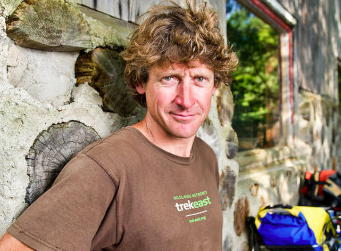Beaver Envy
November 14, 2024

Beavers are ecosystem engineers, reshaping the landscape to hold water, creating oases for many other species of wildlife. © Robes Parrish/USFWS
Support for Beavers in the last few years has been as startling as the slap of an annoyed Beaver’s tail on a pond whose tranquility was just disturbed by an interloper. Beavers are “trending,” to borrow from my young socially mediated colleagues, probably more than any other keystone species in the northern hemisphere. Given their transformative roles in riparian ecosystems and their social popularity, Beavers could be said to be the original “influencers.”
Beavers’ widespread influence deserves study by sociologists as well as biologists. The burly rodent is already the subject of at least two new books, Eager by Ben Goldfarb and Beaverland by Leila Philip. BeaverCON is suddenly among the biggest conservation conferences in the country; yet where are the conferences devoted to eels, salmon, prairie-dogs, tortoises, hemlocks, and other keystone species? Even Wolves these days are not getting the love Beavers have lately found.
Of course, at The Rewilding Institute we are Beaver believers, too, and applaud all the favorable attention they are getting. We just want to share it more widely, with all keystone species — including apex predators like Wolf, Puma, and Jaguar — deserving extra attention from conservationists. Beavers remind rewilding advocates that when we talk of the 4 Cs (to borrow from early Rewilding movement leaders Dave Foreman, Michael Soulé, and Reed Noss), we mean big wild Cores, wide wildlife Corridors, apex Carnivores and other keystone species, and Coexistence with the full range of native wildlife.
For The Rewilding Institute, John Davis serves as a wildways scout, editor, interviewer, and writer. John works as Rewilding Advocate for the Adirondack Council, a member-supported group defending the ecological integrity and wild character of New York’s great Adirondack Park. John serves on the boards of RESTORE: The North Woods, Eddy Foundation, Champlain Area Trails, Cougar Rewilding Foundation, and Algonquin to Adirondack Conservation Collaborative.
John served as editor of Wild Earth journal from 1991-96, when he went to work for the Foundation for Deep Ecology, overseeing their Biodiversity and Wildness grants program from 1997-2002. He then joined the Eddy Foundation as a board member and continues to serve as volunteer land steward for that foundation in its work to conserve lands in Split Rock Wildway. This wildlife corridor links New York’s Champlain Valley with the Adirondack High Peaks via the West Champlain Hills. John served as conservation director of the Adirondack Council from 2005 to 2010.
In 2011, John completed TrekEast, a 7600-mile muscle-powered exploration of wilder parts of the eastern United States and southeastern Canada—sponsored by Wildlands Network and following lines suggested in Dave Foreman’s book Rewilding North America—to promote restoration and protection of an Eastern Wildway. In 2012, John wrote a book about that adventure, Big, Wild, and Connected: Scouting an Eastern Wildway from Florida to Quebec, published by Island Press.
In 2013, John trekked from Sonora, Mexico, north along the Spine of the Continent as far as southern British Columbia, Canada, again ground-truthing Rewilding North America and promoting habitat connections, big wild cores, and apex predators—all of which would be well served by fuller protection of the Western Wildway he explored. John continues to work with many conservation groups to protect and reconnect wild habitats regionally and continentally.
John is available to give public talks on rewilding, conservation exploration, and continental wildways, as well as to write and edit on these subjects. He is also available for contract field work, particularly monitoring conservation easements, documenting threats to wildlands, and marking conservation boundaries. He can be reached at john@rewilding.org and hemlockrockconservation@gmail.com (for his land-care work).

